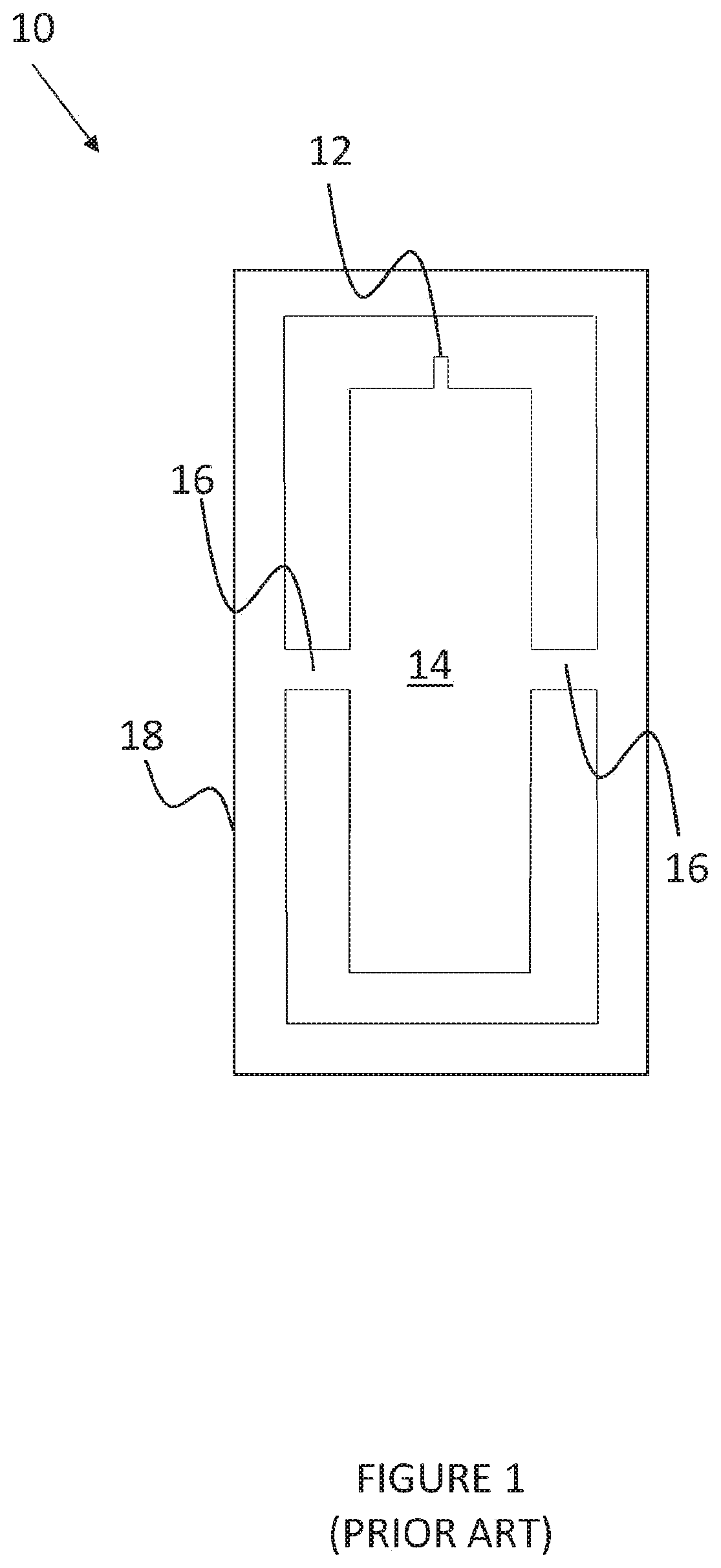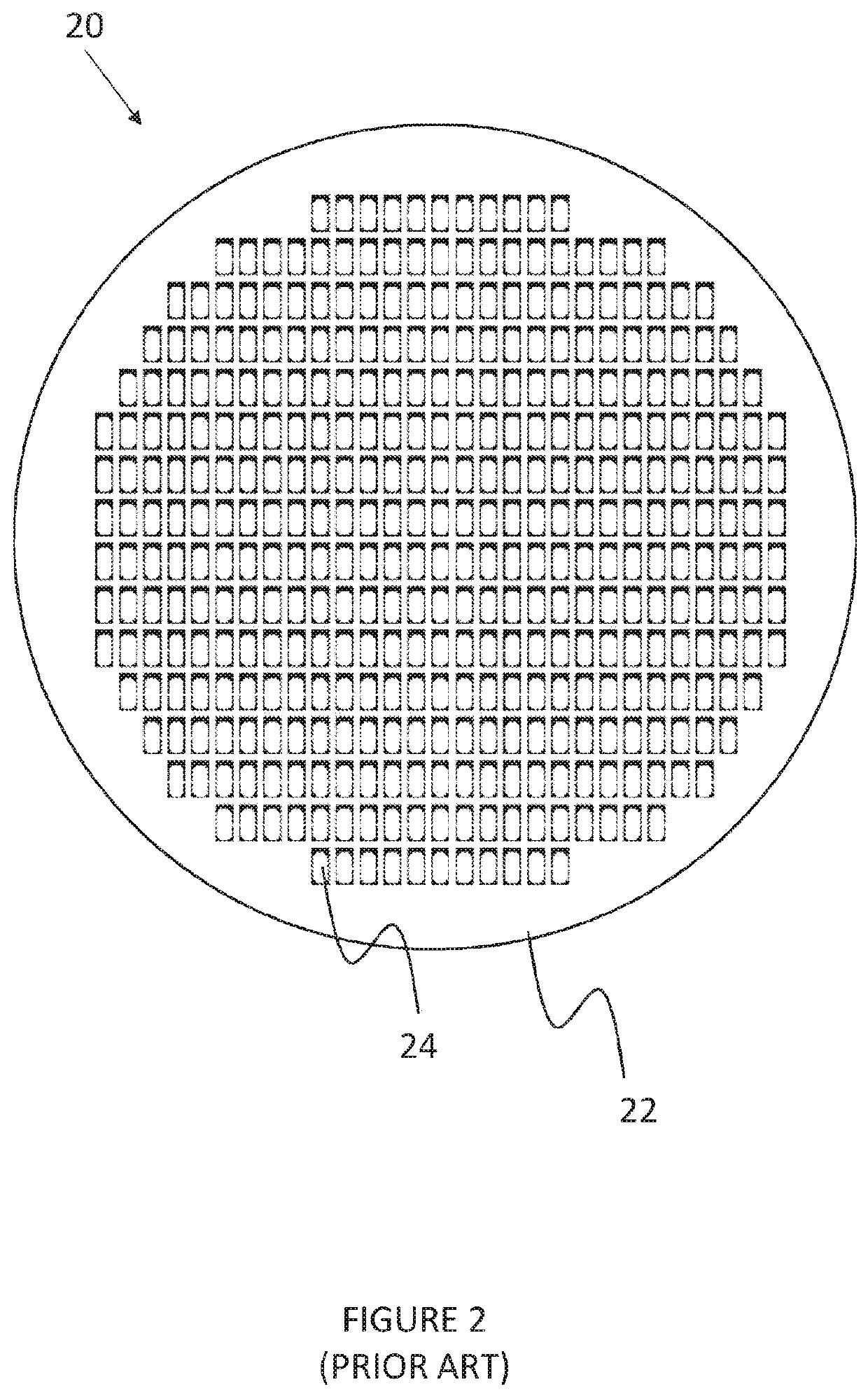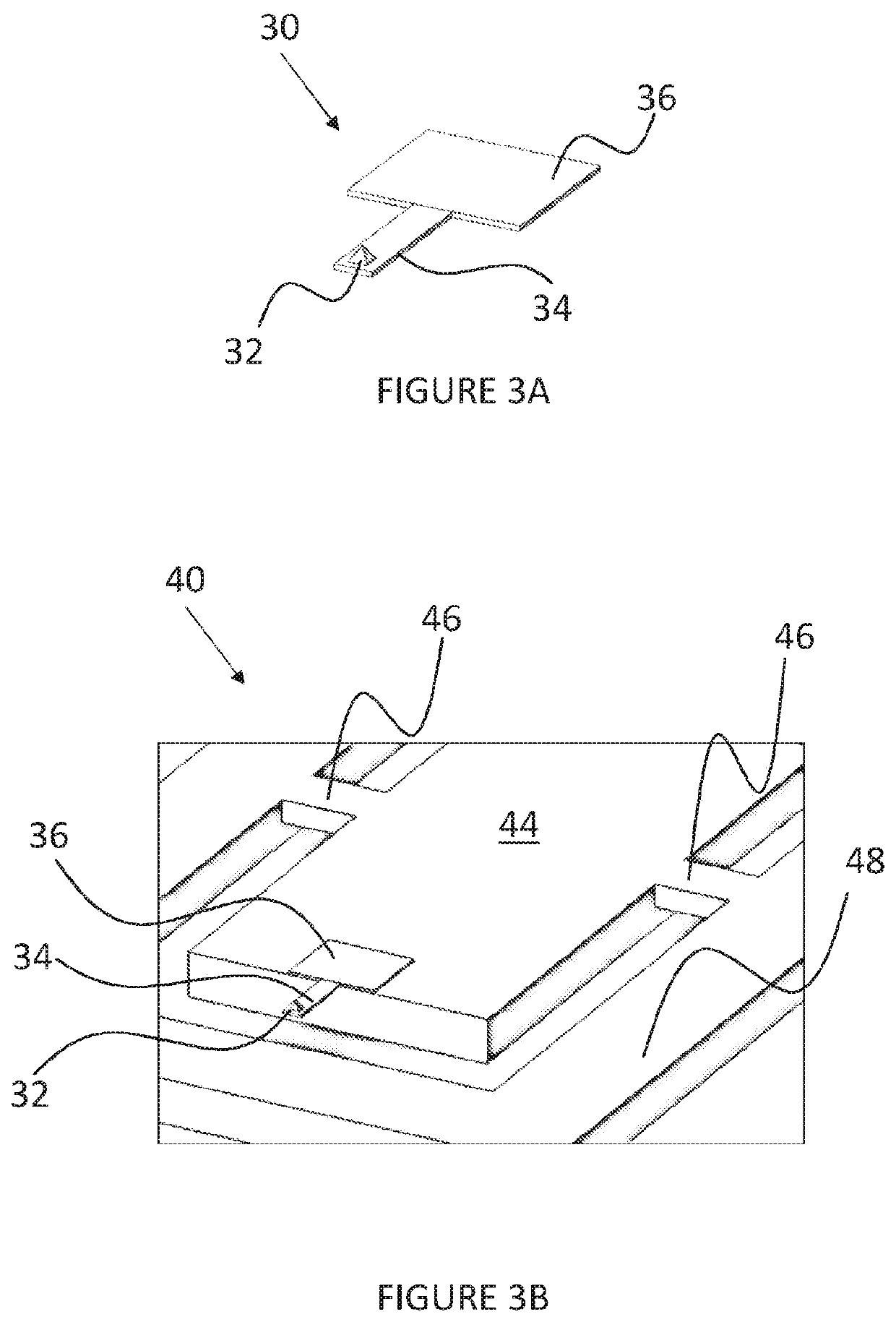Passive semiconductor device assembly technology
a semiconductor device and passive technology, applied in the field of passive semiconductor device assembly, can solve the problems of compromising the structural integrity of the device, the size of the device, and the difficulty of handling and packaging the device, and achieve the effect of increasing efficiency
- Summary
- Abstract
- Description
- Claims
- Application Information
AI Technical Summary
Benefits of technology
Problems solved by technology
Method used
Image
Examples
Embodiment Construction
[0012]Embodiments of the invention are now described, by way of example only, with reference to the accompanying drawings, in which:
[0013]FIG. 1 is an example schematic of a prior art AFM probe;
[0014]FIG. 2 is an example schematic of a processed prior art wafer containing AFM probes;
[0015]FIG. 3A is a perspective view of an AFM tip and cantilever construction;
[0016]FIG. 3B is a perspective view of an AFM probe in accordance with the invention;
[0017]FIG. 4 is a flow diagram of a method of assembling devices, in accordance with the invention;
[0018]FIG. 5A is a schematic of an array of AFM components;
[0019]FIG. 5B is a schematic of the array of AFM components of FIG. 5B with a group of components removed;
[0020]FIG. 6A is a schematic of the array of AFM components of FIG. 5A showing the relative position of a first group of components on a host device;
[0021]FIG. 6B is a schematic of the array of AFM components of FIG. 5B showing the relative position of a second group of components on a...
PUM
| Property | Measurement | Unit |
|---|---|---|
| diameter | aaaaa | aaaaa |
| size | aaaaa | aaaaa |
| thick | aaaaa | aaaaa |
Abstract
Description
Claims
Application Information
 Login to View More
Login to View More - R&D
- Intellectual Property
- Life Sciences
- Materials
- Tech Scout
- Unparalleled Data Quality
- Higher Quality Content
- 60% Fewer Hallucinations
Browse by: Latest US Patents, China's latest patents, Technical Efficacy Thesaurus, Application Domain, Technology Topic, Popular Technical Reports.
© 2025 PatSnap. All rights reserved.Legal|Privacy policy|Modern Slavery Act Transparency Statement|Sitemap|About US| Contact US: help@patsnap.com



